Sotheby's International Realty
- 138 Avenue Victor Hugo
- 75116 PARIS, France
- +33 1 40 60 50 00
Sotheby's International Realty
- 50 rue d'Auteuil
- 75016 PARIS, France
- +33 1 56 26 56 55
Sotheby's International Realty
- 82 Avenue de Wagram
- 75017 PARIS, France
- +33 1 46 22 27 27
Sotheby's International Realty
- Place Sainte Foy - 2 Rue de Chézy
- 92200 NEUILLY, France
- +33 1 41 43 06 46
Sotheby's International Realty
- Place Sainte Foy - 2 rue de Chézy
- 92200 NEUILLY, France
- +33 1 41 25 00 00
Sotheby's International Realty
- 37-39 rue de Turenne
- 75003 PARIS, France
- +33 1 48 87 14 41
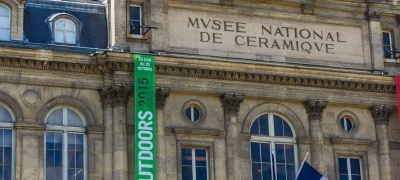
- Home
- >
- Area
- >
- Versailles
Versailles
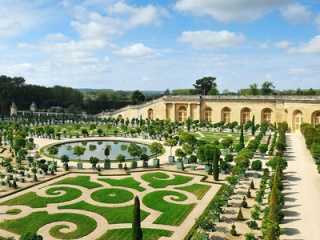
Versailles - The Essence of Royal Elegance in Luxury Real Estate
Versailles, located in the Yvelines, is an iconic city globally renowned for its majestic palace and French gardens. This historic city, once the residence of French kings, is now a hub of prestige and refinement, offering a unique living environment just a few kilometers from Paris.
Versailles embodies an elegant and serene lifestyle, perfect for those seeking a luxurious residence in a setting steeped in history and culture. The real estate market in Versailles is characterized by a diverse range of prestigious properties, from refined apartments in historic buildings to mansions with spacious gardens. Neighborhoods such as Notre-Dame, Saint-Louis, and Montreuil are particularly sought after for their beautiful residences and proximity to the palace and its gardens.
In July 2024, the median price per square meter in Versailles is €7,305, with prices ranging from €5,059 to €9,546 per square meter depending on the location and type of property. This attractiveness reflects the growth of the luxury real estate market in this exceptional city, where the architectural heritage and green surroundings appeal to a discerning clientele.
Living in Versailles means choosing a luxurious and culturally rich lifestyle. The city is endowed with numerous green spaces, such as the palace park, offering endless opportunities for walks, outdoor activities, and moments of relaxation. Culture enthusiasts will appreciate the proximity to iconic places like the Palace of Versailles, the Grand Trianon, and the many museums dotted around the city, providing a fascinating insight into French history.
Residents of Versailles also enjoy an exceptional quality of life, thanks to a high-level educational infrastructure, including prestigious institutions such as Lycée Hoche and École Saint-Jean Hulst. Additionally, the city offers a wide range of activities and leisure options, from local markets to cultural and artistic events.
The luxury real estate market in Versailles stands out with spacious and bright apartments, often located in restored historic buildings, offering high-end amenities and stunning views of historic landmarks. Mansions and townhouses, with their private gardens and sumptuous interiors, are also highly sought after, combining historical charm with modern comfort.
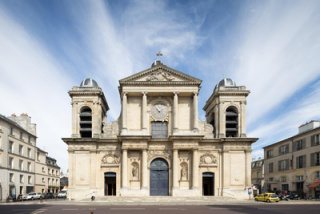
Notre-Dame, Versailles: The Epitome of Prestige and Elegance
Nestled in the historic heart of Versailles, the Notre-Dame district is a gem that embodies prestige and elegance. Known for its rich history and cultural significance, this neighborhood is a perfect blend of old-world charm and modern luxury, making it an ideal place for discerning residents seeking an exceptional lifestyle.
Notre-Dame: A Heritage of Elegance
The Notre-Dame district is steeped in history, with its roots tracing back to the establishment of the first royal parish in Versailles. The iconic Notre-Dame Church, built in the 17th century, stands as a testament to the historical importance of the area. The architecture of the neighborhood reflects this rich heritage, featuring a mix of grand mansions and classic French buildings, each exuding a unique charm.
Luxury Real Estate in Notre-Dame
The real estate market in the Notre-Dame district is characterized by its prestigious offerings. The area offers a range of luxury properties, including elegant apartments in historic buildings, charming townhouses, and grand mansions. These residences often feature classic French architecture, with high ceilings, delicate moldings, and large windows that let in abundant natural light, creating a bright and welcoming living space.
Living in Notre-Dame: A Distinctive Lifestyle
Living in the Notre-Dame district offers a lifestyle of unparalleled distinction. The neighborhood's central location provides easy access to the magnificent Palace of Versailles, a UNESCO World Heritage site, and its vast gardens. Residents can enjoy leisurely strolls in the palace gardens, exploring its beautifully landscaped grounds and the famous Hall of Mirrors.
The neighborhood also boasts a vibrant cultural scene, with numerous museums, galleries, and theaters. The Royal Opera of Versailles, located within the palace, offers a variety of world-class performances, ranging from classical music concerts to ballets and operas. Additionally, the district hosts various cultural events and festivals throughout the year, celebrating its rich historical and artistic heritage.
Exquisite Gastronomy and Luxury Shopping
The Notre-Dame district is a haven for gourmets and luxury shopping enthusiasts. The area is filled with fine dining restaurants, chic cafes, and artisan bakeries, offering a diverse culinary experience. From traditional French dishes to international delights, residents can indulge in exquisite gastronomic experiences just steps from their homes.
For shopping enthusiasts, the neighborhood is dotted with boutiques, luxury brands, and antique shops. The weekly market at Place Notre-Dame is a local favorite, offering fresh produce, fine cheeses, and a selection of high-quality products, perfect for those who appreciate the finer things in life.
A Hub of Education and Excellence
Notre-Dame is not only a cultural and historical center but also a hub of educational excellence. The district is home to some of the most prestigious schools in Versailles, including Lycée Notre-Dame de Grandchamp and École Saint-Symphorien. These institutions are known for their high academic standards and offer a range of programs, making the area an ideal place for families seeking top-notch education for their children.
A Community of Prestige and Discretion
The Notre-Dame district offers a unique blend of community and discretion. Its quiet, tree-lined streets provide a peaceful refuge away from the hustle and bustle of Paris, while still being a short drive from the capital. The exclusivity and security of the neighborhood make it a preferred choice for wealthy individuals and families who appreciate both luxury and tranquility.
Real Estate Opportunities
In 2024, the average price per square meter in the Notre-Dame district ranges from €8,000 to €12,000, reflecting the high demand for luxury properties in this prestigious area. Whether you're looking for a grand mansion, a charming townhouse, or a luxury apartment, the Notre-Dame district offers a range of options to satisfy the most discerning tastes.
Key Features of the Notre-Dame District:
- Proximity to the Palace of Versailles and its gardens
- Rich cultural scene with museums, galleries, and theaters
- Exquisite gastronomic experiences and luxury shopping
- Prestigious educational institutions
- Peaceful and secure residential environment
Living in the Notre-Dame district of Versailles offers a unique opportunity to experience the pinnacle of luxury and elegance. With its rich heritage, cultural offerings, and luxury real estate, this neighborhood is truly a gem in the heart of Versailles, perfect for those seeking a distinguished and refined lifestyle.
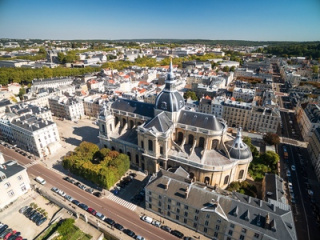
Saint Louis
History at the Heart of Saint-Louis
The Saint-Louis district, established in the 18th century, is one of the most iconic neighborhoods of Versailles. It is named after the Saint-Louis Church, built during the reign of Louis XV. This area is characterized by its beautiful cobblestone streets, charming old houses, and magnificent mansions. Every corner of the district exudes history, offering an immersive experience of the royal era.
Luxury Real Estate in Saint-Louis
The real estate market in the Saint-Louis district is dominated by prestigious properties. The area features mainly luxury apartments in historic buildings, mansions with private gardens, and elegant residences offering stunning views of Versailles' iconic landmarks, such as the Château de Versailles and the Saint-Louis Cathedral. These properties are distinguished by their high-end finishes, spacious interiors, and carefully preserved period architectural elements.
An Exceptional Lifestyle in Saint-Louis
Living in the Saint-Louis district means enjoying an exceptional quality of life. Residents benefit from immediate proximity to the Château de Versailles and its magnificent gardens, providing endless opportunities for walks and relaxation. The district is also rich in green spaces, such as the Parc Balbi and the Potager du Roi, perfect for peaceful moments amidst nature right in the heart of the city.
Cultural Activities and Leisure
The Saint-Louis district is a vibrant cultural hub. Residents can explore numerous museums, art galleries, and theaters. The Théâtre Montansier, for instance, offers an eclectic program ranging from classic plays to contemporary performances. Numerous cultural events and festivals also enliven the district throughout the year, celebrating the historical and artistic heritage of Versailles.
Gastronomy and Luxury Shopping
The Saint-Louis district is renowned for its gastronomic scene and luxury boutiques. Residents can enjoy refined dishes at starred restaurants like L'Angélique and savor local products at the markets on rue du Marché Neuf. Shopping enthusiasts are also well catered for, with a selection of elegant boutiques, antique shops, and art galleries offering unique and high-quality pieces.
A Prized and Discreet Living Environment
The Saint-Louis district offers a unique blend of prestige and tranquility. Its quiet, tree-lined streets create a peaceful residential environment, far from the hustle and bustle of Paris, while remaining easily accessible from the capital. The district's security and exclusivity make it a preferred choice for discerning buyers seeking luxury and discretion.
Real Estate Opportunities
In 2024, the average price per square meter in the Saint-Louis district ranges from €9,000 to €12,000, reflecting the high demand for luxury properties in this historic area of Versailles. Whether you're looking for a charming apartment, a majestic mansion, or an elegant residence, the Saint-Louis district offers a range of options to satisfy the most refined tastes.
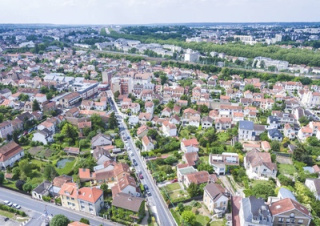
Prochefontaine: A Hidden Gem in Versailles
The Prochefontaine neighborhood, nestled in the enchanting setting of Versailles, is a hidden gem that combines historical charm with a peaceful living environment. Less known than the city’s central districts, this area offers an exclusive and discreet residential atmosphere, ideal for those seeking tranquility and elegance close to the capital.
Prestigious Real Estate in Prochefontaine
The real estate market in Prochefontaine is characterized by a selection of prestigious properties. Residences in the area are distinguished by their refined architecture and luxurious interiors. The neighborhood mainly features grand homes, contemporary villas, and elegant apartments, often located in meticulously restored historic buildings. Properties offer high-end amenities such as landscaped gardens, private pools, and spacious, light-filled living areas.
A Peaceful and Elegant Lifestyle
Living in Prochefontaine means choosing a peaceful and elegant lifestyle. The neighborhood is surrounded by beautiful green spaces, perfect for walks and outdoor activities. Residents can enjoy the tranquility of nearby parks while being just minutes away by car from the center of Versailles and its historic attractions, such as the Château de Versailles and its gardens.
Cultural Activities and Leisure
Prochefontaine is also a hub of culture and leisure. The neighborhood benefits from proximity to several historic and cultural sites in Versailles, as well as various artistic and musical events that enliven the local life. Residents can also discover refined restaurants and chic cafes, offering a unique and sophisticated culinary experience.
A Privileged Access to Paris
Although Prochefontaine offers a calm, village-like atmosphere, it is ideally situated for those working in Paris. The neighborhood is well-served by public transportation, allowing easy and quick access to the capital. This proximity to Paris, combined with Prochefontaine’s peaceful ambiance, makes it a favored choice for families and professionals seeking to escape urban bustle without sacrificing convenience.




